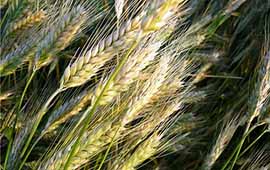Triticale on the grain market is a relatively new crop, which was obtained only at the end of the 19th century.
It is a mixture of rye and wheat, which combines the best qualities of these crops, and is grown, as a rule, for animal feed. In addition, today, this grain is rarely used for food, making flour from it, as well as making other food products, such as biscuits, pasta, pizza dough and breakfast cereals.
What you need to know about recycling triticale
Recycling triticale is not an easy task. The main difficulty in this process is the separation of the shell from the endosperm – only in this case it is possible to obtain high-quality flours. Basically, this crop is used in an unprocessed form, sending it for feed to farm animals. This grain contains a fairly large amount of proteins – 1.5% more than in wheat, and 4% more than in rye. At the same time, triticale contains less glutenin, but more lysine, as well as fat. By the way, one kilogram of green mass of this plant contains 0.3 fodder units. In addition, this culture has increased frost resistance, even higher than that of winter wheat, and also easily resists fungal and viral diseases, and is not so demanding on the condition of the soil. Although farmers do not hide the fact that for the highest yields it is better that triticale is still grown in black soil.
In which EU countries is triticale processed?
The main countries where this crop is grown are Poland, Germany and France, as well as Belarus. According to statistics from the Food and Agriculture Organization of the United Nations, the cultivation of this crop in the EU countries is only gaining momentum every year – if in 2009, 15 million tons of grain were harvested in 29 countries, then by 2016 this amount increased to 15.2 million tons. At the same time, the processing of triticale is also possible only in the EU countries, which are engaged in the cultivation of this crop, since only there are good capacities for this process. Processed crops are also delivered to other countries, including Ukraine.
Profitability
For splitting this culture into separate components, the technology of deep processing of grain should be used. These requirements, as a rule, are met only by equipment that is available in European countries. On the territory of Ukraine, such capacities practically do not exist, therefore it makes sense to supply local grain to Europe, where local factories will process this grain. It should be noted that Ukrainian-made triticale can be supplied to Europe without additional documents, providing only quality certificates, which simplifies the work of local farmers with European buyers.






